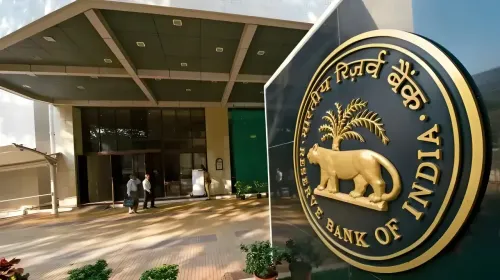Will GCCs in India Surpass 2,200 by 2030?

Synopsis
Key Takeaways
- Projected growth of GCCs in India from 1,700 to over 2,200 by 2030.
- 25-30% increase in REIT AUM expected.
- Record-breaking office space leasing in CY24.
- Strong demand from multinational firms for core activities in India.
- Commercial real estate offers high-growth opportunities.
New Delhi, Aug 1 (NationPress) A recent report indicates that the number of Global Capability Centres (GCC) in India is projected to rise from 1,700 to more than 2,200 by 2030. This growth is a reflection of the changing landscape in the business sector.
According to the domestic investment bank SBI Capital Markets (SBICAPS), there will be a 25-30 percent increase in REIT assets under management (AUM) in the upcoming years, driven by a wider array of asset classes and a consistent influx of investable assets.
In the calendar year 2024 (CY24), leasing for office spaces shattered previous records by 20 percent, with rising rents and decreasing vacancy rates. The momentum is expected to persist into CY25, particularly in cities like Bengaluru, Delhi-NCR, and Pune, as per the report from the investment banking division of the State Bank of India (SBI).
GCCs have emerged as a primary source of demand, with multinational companies increasingly utilizing India for core operations instead of merely seeking labor cost advantages. The report anticipates a 1.3 times growth for these centres in the coming years. Additionally, flex spaces witnessed an astounding 43 percent year-on-year growth in leasing during the first half of CY25, marking the highest leasing activity recorded in a six-month span.
The report notes, "The formalization of the sector, initiated with RERA and IBC, has reached a peak. These developments have heightened the demand for funds. Promoters are actively pursuing the QIP route in FY25 to bolster equity financing."
Moreover, Alternate Investment Funds (AIFs) are becoming more engaged in the high-risk, high-reward phases of land acquisition and construction financing.
In CY25, real estate constituted their largest investment sector, nearly double that of the next sector. With various regulatory measures favoring institutional capital and stabilizing cash flows in the sector, the trend of diverse fundraising—spanning IPOs, AIFs, and sovereign wealth funds—is expected to persist.
According to SBICAPS, commercial real estate, especially office spaces, represents a high-growth area, providing opportunities aligned with every investor’s risk-reward profile. The regulatory environment is conducive to expanding the investor base, and retail participation is likely to increase as REIT AUM continues to grow.
– IANS
aaron/na









